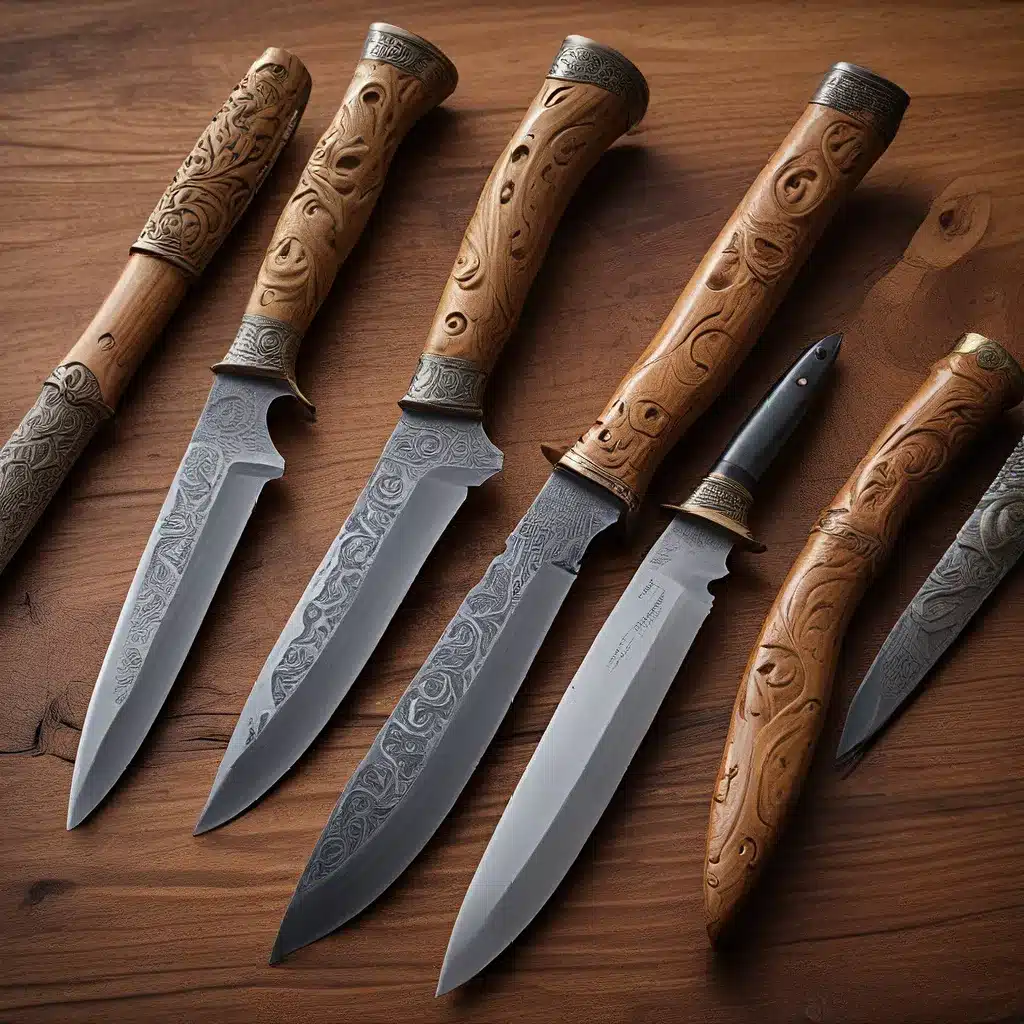
As a self-proclaimed knife enthusiast, I’ve always been fascinated by the rich histories and cultural significance behind some of the world’s most iconic blades. And when it comes to knives that have truly carved their way into the annals of history, few can rival the enigmatic crooked knife, also known as the mocotaugan.
This mysterious blade has a lineage that stretches back centuries, tracing its origins to the Penobscot Nation and other Native American tribes along the northeastern coast of North America. The crooked knife’s distinct angled design and unique method of use – held palm-up and cutting towards the body – have made it a truly one-of-a-kind tool, imbued with layers of cultural meaning and practical significance.
A Knife with Many Names
As I delved into the rich history of the crooked knife, I was struck by the sheer number of names it’s been known by over the years. From the Mikmaq term “mocotaugan” to the more generalized “crooked knife,” this blade has been called by all sorts of monikers, each one reflecting the diverse cultures and communities it has touched.
What’s particularly fascinating is how these names often captured the very essence of the knife itself. The “crooked” designation, for instance, perfectly encapsulates the tool’s distinctive angled blade, which allows for a unique cutting motion and a level of control that’s simply unmatched by traditional straight-bladed knives.
An Evolution of Form and Function
But the crooked knife’s journey hasn’t just been one of shifting nomenclature – it’s also been a tale of evolving craftsmanship and changing materials. According to the sources I’ve come across, the earliest iterations of this knife were likely fashioned from sharpened rocks, which were then attached to decorated handles. Over time, as Native Americans and Europeans established contact, the materials shifted, with rocks and teeth being replaced by recycled steel from European weapons.
This intermingling of cultures and technologies is a fascinating aspect of the crooked knife’s history. It’s a testament to the adaptability and ingenuity of the Native American artisans who kept this tradition alive, seamlessly incorporating new materials and techniques into their time-honored craft.
A Knife with Many Lives
As I delved deeper into the backstory of the particular crooked knife in question, I was struck by the sheer number of lives it had touched and the vast distances it had traveled. From its likely origins in Maine, to its eventual arrival in Philadelphia and the hands of a renowned collector, this blade has carved a truly remarkable path through history.
What’s particularly intriguing is the way its meaning and value have shifted over time, reflecting the changing spheres of cultural exchange and the ebb and flow of human relationships. One moment, it may have been a cherished tool, imbued with deep cultural significance for its Native American creators. The next, it could have been a coveted trade item, a cultural souvenir for European sailors and collectors.
A Knife, a Metaphor, and a Lesson in Connectivity
As I held this crooked knife in my hands, marveling at its weathered handle and the stories it must hold, I couldn’t help but see it as a metaphor for the interconnected nature of human experience. This blade has bridged the gap between cultures, traveled vast distances, and weathered the storms of changing times. It’s a testament to the power of objects to transcend boundaries and connect us to the rich tapestry of our shared history.
And in a world that’s increasingly dominated by mass-produced goods and impersonal technology, the crooked knife serves as a powerful reminder of the enduring value of handcraftsmanship and the deeply personal connections we can forge with the objects we create. After all, as I’ve learned from my own adventures in knife making, there’s something truly special about pouring your heart and soul into a tool, imbuing it with your own unique touch and history.
So, as I continue to explore the captivating world of knives and their stories, I can’t help but feel a kinship with this crooked blade. It’s a testament to the power of human ingenuity, the resilience of cultural traditions, and the ways in which the objects we create can serve as bridges between worlds, connecting us to the rich tapestry of our shared past and inspiring us to shape a more interconnected future.


